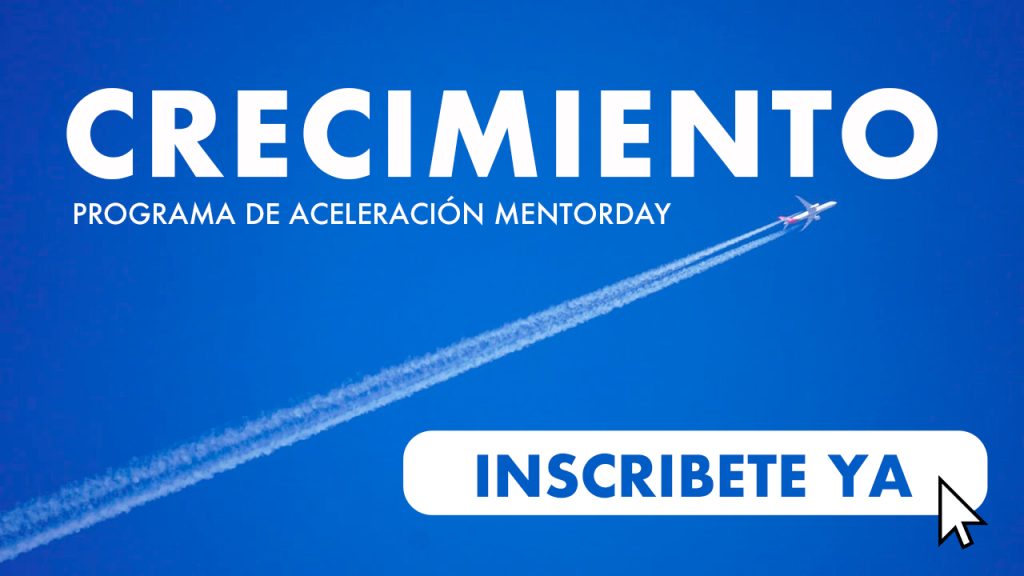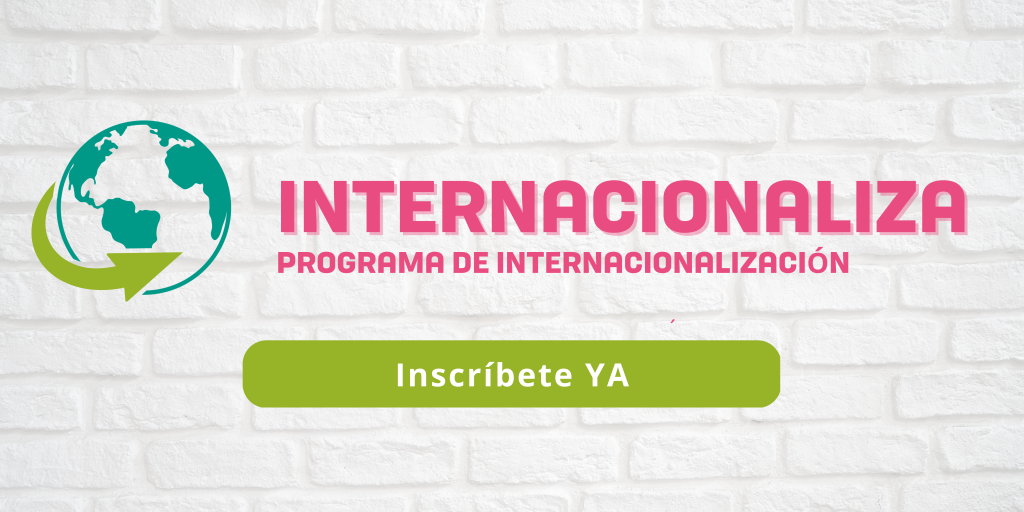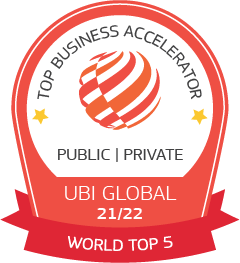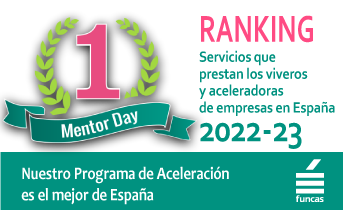BARRIERS TO INTERNATIONALISATION
RESUMEN:
Descubre cómo superar los principales desafíos de la internacionalización, desde crecer lo suficiente para competir en mercados extranjeros hasta adaptar tus procesos y productos. Este artículo aborda las estrategias esenciales para enfrentar las barreras financieras, culturales, y logísticas, asegurando el éxito de tu empresa en el escenario global.
Principales Desafíos de la Internacionalización
- Crecimiento y Adaptación: Asegura que tu empresa esté preparada para escalar y adaptarse a las exigencias de nuevos mercados.
- Estacionalidad y Demanda: Encuentra el equilibrio perfecto entre la oferta y demanda en distintos mercados para compensar la estacionalidad.
- Barreras Culturales e Idiomáticas: Supera las diferencias culturales y lingüísticas para comunicarte efectivamente en cada mercado.
Strategies for Overcoming Obstacles
- Análisis Profundo: Evalúa cómo tus productos se ajustan al mercado objetivo y considera la necesidad de adaptaciones.
- Planificación Financiera: Afronta los obstáculos financieros preparándote para la fluctuación monetaria y asegurando el acceso a créditos de exportación.
- Capacitación y Reclutamiento: Invierte en la formación de tu equipo en idiomas y culturas extranjeras, y si es necesario, recluta personal local que aporte conocimientos específicos del mercado.
- Identificación de Oportunidades: Utiliza las herramientas digitales para identificar potenciales clientes, socios y oportunidades de negocio en el extranjero.
- Información de Mercados Exteriores: Aprovecha Internet para recopilar datos valiosos sobre regulaciones de importación y preferencias de consumo en tus mercados objetivo.
Superando el Miedo a la Internacionalización
- Afronta lo Desconocido: Vence el temor al fracaso y explora nuevos mercados con confianza y determinación.
- Adaptabilidad: Estar dispuesto a aprender y adaptarte es clave para triunfar en cualquier mercado global.
- Inversión Inteligente: Desmitifica la creencia de que se necesita una gran inversión inicial. La colaboración con socios locales puede ser un primer paso efectivo y económico.
Tabla de contenidos
Some of these challenges may include
- To be able to grow sufficiently and to deal with internationalisation.
- Optimising production processes to adapt to new markets, and to existing competition.
- To be able to compensate the possible seasonality of the product on offer, balancing supply and demand in the different markets.
- To be able to overcome possible cultural barriers, language barriers, or the existence of different currencies in the target markets.
To do this, the first thing the company has to do is to analyse its situation and answer the following questions about its business model:
- ¿My products fit in the target market as they are or should I make changes?
- The price positioning in the target market can it be the same or do I have to change it?
- How am I going to do the distributionCan/should I rely on local partners?
- How am I going to communicateDo I need a differentiated strategy for the target market?
- Dependence of the currency.
Four main obstacles as barriers
In principle, and in general terms, four main types of obstacles that companies may face when developing their international activity can be distinguished:
-
FINANCIAL RESOURCE CONSTRAINTS:
-
FINANCIAL OBSTACLES:
-
Related to aspects such as currency fluctuation or difficulty in accessing export credits.
Financial resource constraints can affect various aspects of the company's business:
-
IN ITS INTERNAL FUNCTIONING:
Your company needs money to finance its productive activity, working capital, etc. More related to its international activity, the company needs to have resources to finance its commercial and marketing activities.
-
IN THEIR RELATIONSHIP WITH POTENTIAL CUSTOMERS:
The company needs to offer financing to its foreign customers in order for them to finance their purchases.. This can be short-term financing, or medium to long-term financing. In which it is normal to use export credits.
-
LACK OF TRAINED MANAGEMENT STAFF:
The lack of trained human resources is manifested in that Many SMEs do not have staff who speak languages. There are cases of companies that prepare an email in Spanish and then translate it into English in a web translator.
-
DIFFICULTY IN IDENTIFYING POTENTIAL CUSTOMERS OR PARTNERS AND BUSINESS OPPORTUNITIES IN OTHER COUNTRIES:
This is one of the key obstacles companies face, Although one might think that with the advances in information made possible by the Internet, this obstacle would have become less important. A lot of information can be obtained via the Internet, but it is It is necessary to have the capacity to study and debug it properly; and here again we come up against the barrier mentioned in the previous point, the lack of preparation of human resources.
-
DIFFICULTY IN OBTAINING INFORMATION ON FOREIGN MARKETS
This is undoubtedly one of the areas in which the Internet has made a breakthrough. It is much easier today than it was 20 years ago to obtain market research or information via the Internet. The most relevant type of information that a company needs when dealing with international markets is, for example, information on import regulations in other countries.
It remains, however, an area whose importance is often underestimated in companies:
- Trade barriers: lack of knowledge of business opportunities, lack of knowledge of the distribution structure, business practices, or lack of contacts.
- Logistical obstacles: travel to explore markets, high freight rates, coordination and control costs, cultural problems.
- Legal obstacles: tariff and non-tariff barriers.
- Obstacles to direct investment: which in many cases require the formation of joint ventures with local companies.
REMOVING THE FEAR BARRIER TO INTERNATIONALISATION
The desire to internationalise must lead you to explore new markets, removing your fear of the unknown, leaving your comfort zone, not being held back by a sense of insecurity, explore with determination and determination.
At times, we are gripped by things that anticipate events, insecurity in a country: citizen insecurity, corruption and other barriers you'll break down when you travel
"localisms and illiteracy can be cured by travelling".
-
FEAR OF BEING CHEATED:
Ignorance of legislation, customs or environment makes us see potential "scammers" everywhere. Getting out of your comfort zone is hard, and your local market is more or less known. The same fear of setting up a business is installed in the entrepreneur when he/she has to make decisions that imply leaving his/her "comfort zone". Crossing physical borders also means crossing mental borders!!!
-
COMFORT:
Have you ever heard the phrase: "How good it is to live in Spain"? If so, we can understand that Spanish entrepreneurs tend to stay where they "think they live well". Travelling means spending time away, not eating the same food, meeting new people... Uff what laziness, right!!!! Well, our circle of comfort must clash head-on with our desire to do new things. If you think that the world ends in Spain, I invite you to "get off your ass" and see for yourself that this is not the case, and that "life is also very good" in other places.
-
LANGUAGE:
You learn language when you need it, so the sooner you start using it, the better.
-
INSECURITY:
It is very Spanish to think of ourselves as less than others. We stand out in communication, creativity, social relations, empathy... Being Spanish is very well regarded in many places, at a business level. Sometimes, insecurity comes because we are not convinced of the product or service we offer.
For this, there is a remedy, which is to test it beforehand. Travelling to the place where you want to do business is essential to check first-hand if what you have is of value. And, at the same time, we can get rid of any prejudices we may have.
-
BELIEF THAT A LARGE INVESTMENT HAS TO BE MADE:
In these times, investment costs have to be measured very carefully. There is no doubt that travel and accommodation is a must, although with the process further along, telephone and video conferencing can be used).
On this I would ask the following question; Does it cost the same to open a branch in a province other than your own as it does outside Spain?
Sometimes it is even cheaper to do it abroad. Being able to measure the initial investment can also lead to a process of collaboration, in a first step, with local companies in the chosen country.
The partner or joint venture model, which is still a collaborator, can save a lot of costs, and then move on to other models when the business is more mature.
-
THE FEELING OF LACK OF CONTROL:
The control of the business by the entrepreneur is essential for its good development and it is decisive to choose your collaborators. In my opinion, there is no more risk in choosing personnel for your company in Spain than outside Spain.
THIS DECISION IS VERY IMPORTANT AND SHOULD BE A MATTER FOR REFLECTION:
- Do I deploy someone I trust?
- Do I contract or collaborate with someone local?
- How do I control the people who represent me there?
It is certainly not easy to carry but there are ways to do it. That is if you are going to have to travel. An entrepreneur cannot think that everything is done from there and nothing happens. There is no doubt that going abroad can be a turning point for many entrepreneurs. Doing so in the company of other entrepreneurs can take away the feeling of "vertigo" that we have when facing this "adventure".
For many it can mean the salvation of their company or its take-off towards new goals. Whatever you do, do it with conviction. If you are not sure, it is better not to do it. We may think that it is never a good time to internationalise our company because we are at another point in our business development.
The internationalisation of a company can present a number of barriers that can hinder its success in foreign markets.
SOME OF THE MOST COMMON BARRIERS ARE DESCRIBED BELOW:
- Financial resource constraints: Companies may face difficulties in financing their productive activity, working capital, commercial and marketing activities. In addition, currency fluctuation and difficulty in accessing export credits may negatively affect the company.
- Lack of trained management staff: Many companies do not have staff who speak languages and therefore may have difficulties communicating with customers and partners in international markets.
- Difficulty in identifying potential customers or partners and business opportunities in other countries: It is important for the company to identify potential customers and business opportunities in international markets. Lack of human resource preparation can be a barrier to achieving this goal.
- Difficulty in obtaining information on foreign markets: Although the Internet has made great progress in obtaining information on foreign markets, it is still an area whose importance is often underestimated in companies.
In addition to these barriers, there may also be commercial, logistical, legal and direct investment barriers. It is also important to note that fear of internationalisation, comfort, language barriers, a sense of lack of control and the belief that a large investment is required can also be barriers to a company's internationalisation.
To overcome these barriers, companies can analyse their situation and answer questions about their business model, hire language-trained staff and have a clear strategy for identifying potential customers and business opportunities in international markets. In addition, they can look for local partners and use technology such as video conferencing to reduce investment costs.
How can an entrepreneur use Inteligencia Artificial (IA) to find the barriers to internationalisation?
An entrepreneur could use ChatGPT to find information on the most common barriers to a company's internationalisation. He or she could ask specific questions about the financial, cultural, logistical and legal obstacles that businesses seeking to expand internationally might face.
In addition, you could ask for recommendations on how to overcome these barriers and get advice on how to better prepare your company for internationalisation. ChatGPT could provide valuable information and personalised answers that could help the entrepreneur make more informed and strategic decisions about international expansion.
PRACTICAL EXAMPLES OF HOW AN ENTREPRENEUR COULD USE CHATGPT TO FIND BARRIERS TO INTERNATIONALISATION:
- An entrepreneur who is considering expanding his or her online clothing business to a foreign market could ask ChatGPT: "What are the most common barriers to selling clothes online in Europe? ChatGPT could respond with information on the import and export regulations for clothing in different European countries, the expectations of European customers in terms of price and quality, and cultural or linguistic barriers that might hinder market entry.
- An entrepreneur considering exporting agricultural products to Latin America could ask ChatGPT: "What are the most common barriers to exporting agricultural products to Latin America? ChatGPT could respond with information on import and export regulations for agricultural products in different Latin American countries, local consumer preferences in terms of product varieties and brands, and logistical or infrastructure barriers that might hinder the transport and storage of products.
- An entrepreneur who is considering expanding his software business to Asia could ask ChatGPT: "What are the most common barriers to selling software in Asia? ChatGPT could respond with information on intellectual property and technology regulations in different Asian countries, Asian customers' expectations in terms of functionalities and compatibility, and cultural or linguistic barriers that might hinder communication with local customers and partners.
In a nutshell, ChatGPT could help entrepreneurs identify the most common barriers in different markets and sectors, provide up-to-date information on regulations and business practices, and suggest strategies to overcome or reduce those barriers.
APPLY THIS TIP TO YOUR PROJECT
TASK
NOW THAT YOU HAVE READ THIS TIP, ANSWER THE QUESTIONS:
- Barriers to your internationalisation?
CASE STUDY OF AN ENTREPRENEUR USING CHATGPT TO IDENTIFY BARRIERS TO INTERNATIONALISATION AND FIND SOLUTIONS TO OVERCOME THEM
Juan is an entrepreneur who owns a small cleaning products manufacturing company and is interested in expanding internationally. However, he knows that there are many barriers that can arise in this process and he wants to be prepared to face them.
John decides to use ChatGPT to help him identify potential barriers and find solutions to overcome them.
AFTER ASKING SOME QUESTIONS TO THE CHATGPT PRESENTS THE FOLLOWING POTENTIAL BARRIERS:
- Financial difficulties: Juan may face problems in obtaining financing and dealing with currency fluctuation.
- Cultural and linguistic barriers: Juan may have difficulties in adapting to cultural and linguistic differences in the foreign market, as well as in communicating with potential customers.
- Logistical problems: Juan may encounter difficulties in shipping his products abroad due to transport, storage and distribution problems.
- Legal obstacles and regulations: Juan may have to comply with different regulations and laws than in his home country and face tariffs.
AFTER IDENTIFYING THESE BARRIERS, JUAN WORKS WITH CHATGPT TO FIND SOLUTIONS. TOGETHER, THEY COME TO THE FOLLOWING CONCLUSIONS:
- To overcome financial difficulties, Juan decides to work with his local bank to obtain financing to cover the costs of internationalisation. He also considers working with local companies abroad to minimise financial risks.
- To overcome cultural and linguistic barriers, Juan decides to hire a team of translators and localisers to help him adapt his content to foreign markets. He also ensures that his sales team has a good understanding of the cultural and linguistic differences in each target market.
- To overcome logistics problems, Juan decides to partner with a logistics company that has experience in transporting and distributing products in foreign markets. He also works on optimising his supply chain and reducing costs.
- To overcome legal hurdles and regulations, Juan works with a lawyer specialising in international law and ensures compliance with all applicable laws and regulations in each foreign market.
With the help of ChatGPT, Juan was able to identify potential barriers and find practical solutions to overcome them. As a result, he felt more confident in his internationalisation plan and was able to expand his business successfully.
QUIZ
- 💻 PRACTICE with an expert in the next practical webinar.
- 🔎 CONSULT more related TIPs with this same theme.
- 📖 AMPLIA your knowledge by downloading this EBOOK.
THINK ABOUT YOU
- 🚀 IMPULSA your company in the next acceleration programme, ¡book your place now!
- 🥁 PRACTICE with your project in this practical webinar, ¡apply for your place!
- 🌐 CONTACT with other entrepreneurs and companies, ¡register and take part in the next Networking!
THINK ABOUT HELPING OTHERS
- 🤝COLLABORATE as a volunteer: expert, mentor, inverter, awarding, Spreading the word, challenging, innovating, creating a TIP...
- 💬 RECOMMENDS this programme to reach out to more entrepreneurs by Google.
- 👉 SHARE your learning!
- 📲 SEND this TIP 👇









